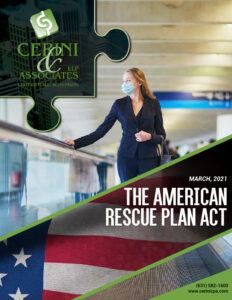On Friday, July 17th the Federal Reserve updated the Main Street Lending program to provide information related to nonprofit organizations ability to participate in the program as mandated by the CARES Act. The facility now includes 2 separate but similar facilities targeted at Nonprofit Organizations – the Nonprofit Organization New Loan Facility (NONLF) and the Nonprofit Organization Expanded Loan Facility (NOELF).
The terms of both the NONLF and NOELF are substantially similar. The NONLF is for organizations looking for a “new loan,” meaning they do not currently have a debt facility with an existing lender. The NONLF Loans will generally be smaller, with a minimum of $250,000 and a maximum of $35,000,000 (or borrowers’ quarterly revenue). The NOELF is for borrowers with a pre-existing credit relationship originated prior to June 15, 2020 and has an existing maturity of at least 18 months. The NOELF Loans provide an “upsized tranche” to increase the current loan with terms of this loan program. The loans are for a minimum of $10,000,000 and a maximum of $300,000,000 or 2019 average quarterly support. Broadly speaking, these loans are targeted at organizations with strong fiscal health prior to the COVID-19 Pandemic.
In order to be an eligible borrower, a Nonprofit Organization will need to meet the following criteria under either program:
- 1. Been in continuous operation since January 1, 2015
- 2. Be exempt under either Section 501(C) (3) or 501(C)(19). The term sheet indicates other organizations may be considered but only at the discretion of the Federal Reserve.
- 3. The organization must have at least ten employees but less than 15,000 or annual revenue of less than $5,000,000,000 and an endowment of less than $3,000,000,000
- 4. Total non-donation revenues equal to 60% of expenses for the period of 2017 – 2019.
- Non-donation revenues are revenues less the following donations
- a. Proceeds from fundraising events
- b. Federated campaigns
- c. Gifts
- d. Donor Advised Funds
- e. Funds from similar sources
- Expenses are total organization expenses less depreciation and amortization.
- Non-donation revenues are revenues less the following donations
- 5. The ratio of earnings before interest, depreciation and amortization (EBIDA) to revenue is greater than 2%
- 6. Unrestricted Cash & Investments (Liquid Assets) of at least 60 days
- 7. Ratio of Liquid Assets to existing debt of at least 55%
If a borrower is able to meet the above qualifications to be considered eligible, the terms of the loans are as follows:
- 1. 5 Year Maturity.
- 2. Principal deferred for 2 years and interest payments deferred for 1 year.
- 3. Amortization of 15% at the end of Year 3, 15% at the end of Year 4 and 70% at maturity.
- 4. The rate is 1 or 3 month LIBOR + 3%. This would be ~3.25% as of July 23rd, 2020.
- 5. The loan is not subordinated to any other debt and is pari passu for any other debt in the expanded facility.
- 6. No prepayment penalty.
The loans themselves will have a 1% origination fee charged by the lender as well as a potential 1% facility fee passed on from the lender to the borrower (for a total of 2%). The borrower will have to maintain certain covenants, including refraining from paying any debt (other than mandatory and due) while this loan is outstanding. The borrower also must certify that it has a good basis to believe it has its ability to meet its financial obligations for 90 days and does not expect to file for bankruptcy, along with a commitment to make reasonable efforts to retain employees.
As the Federal Reserve Facility is purchasing the participations in these loans as of the date of these term sheets, these loans should, in theory be available now. Interested borrowers should contact their banking contacts if they are looking to obtain one of these loans. The Federal Reserve facility is scheduled to stop purchasing loans on September 30, 2020; however, the term sheets indicate that this date may (and probably will) be expanded.
To date, much of the interest in the Main Street Lending program has been lukewarm for both private companies and Nonprofit Organizations, and few financial institutions have been pushing out participation in these facilities. Many private organizations either will not meet the underwriting requirements imposed (it would require a minimum EBITDA of $62,500) or do not find the distribution restrictions (limited to amounts needed to cover taxes for owners for the loan term and 12 months after) burdensome. Nonprofit Organizations may face similar hurdles meeting the above underwriting requirements, particularly if they rely heavily on donations, operated at a deficit for 2019, or do not have at least 60 days in cash at the time of loan origination and do not have 2019 annual revenue of at least $1,000,000.

EDWARD MCWILLIAMS, CPA | Partner
Ed is a Partner in the firm’s tax and business advisory practice focusing on providing services to middle market private companies across different industries as well as to early stage startups. Ed has over a decade of experience providing tax and business consulting services to these companies of different sizes and across different industries, bringing a broad and diverse knowledge base and strategic solutions to the many complex issues that businesses face.





No comment yet, add your voice below!